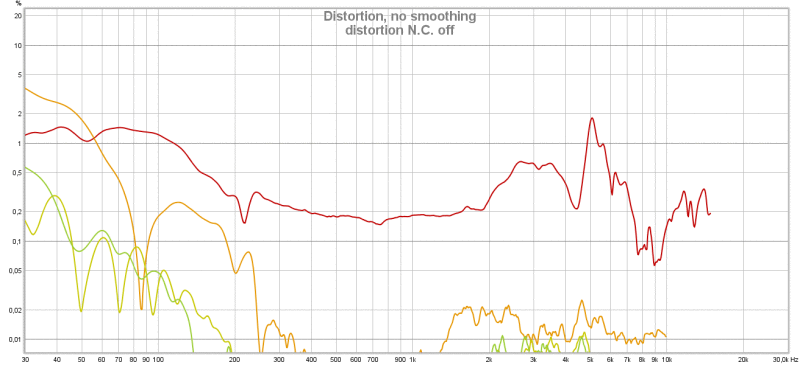I don't have a degree in physics, but here are some thoughts:
If measuring, Harmonic Distortion is the generation of tones, by a converter, an amplifier or transducer, related by integer multiples of the fundamental frequency, that are not present in the source sine wave...
Blow on a beer bottle, it nearly produces a clean sine wave. The same "note" (fundamental frequency) would sound very different on a trumpet, due to the harmonic series the trumpet produces. You would generally prefer that the audio equipment not add its own harmonics. All sounds other than a pure sine wave are simultaneous combinations of different frequencies at different amplitudes.
0.05% THD means the harmonics are at least 66.02dB quieter than the fundamental being measured.
An audible noise floor is noise you can hear, especially when no music is playing. -60dB , might be an audible level, depending on the frequency spectrum of the noise. Lows are harder to hear than highs (see Fletcher Munson)
Decibels are a logarithmic scale, and relative to some chosen level. 0dB, when talking signal, is usually defined as the full signal value, lesser values are related by negative decibels.
The relation can be positive (greater than) or negative (less than) whatever reference you have assigned as 0dB. For Sound Pressure Level, 0dB is defined.
I have HD650 too. I think of them as "the safe choice".
Here is the spectrum of my voice saying "ooooohhhhhh". Fundamental about 200Hz, harmonics at multiples of 200Hz, and some noise...
View attachment 44294
Here is blowing across the top of a bottle. The fundamental stands alone, a low level of harmonics, much closer to a sine wave.
View attachment 44296
The moral of the Harmonic Distortion story:
If you add to or change the harmonic series (Harmonic Distortion), you change the sound.
And the waveforms:
View attachment 44298
Testing uses sine waves extensively, as they can be analyzed very precisely for their level of perfection.
 .
.
